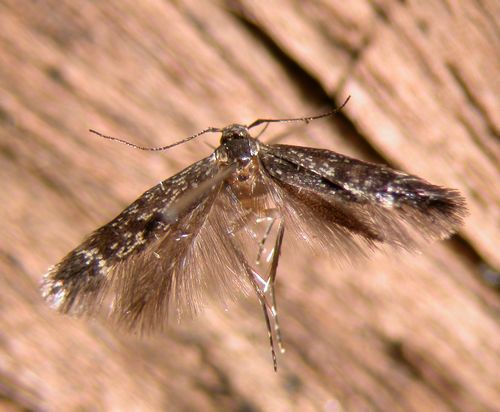Insects: Native Species
Scientific name: Hyposmocoma (new species)
Common name(s): Case-Making Hawaiian Aquatic Moth


Status: Endemic
Habitat: Large volcanic boulders containing small vesicles or holes on the surface. Will not be found on very smooth rocks as they need the tiny holes on the rock for shelter.
Preferred Area of Stream: Boulder areas in the middle of the stream, especially near the splash-zone area of riffles and cascades. Also prefers areas of full to moderate sun and will not be found in heavily shaded areas.
Range in Hawai‘i: All main Hawaiian Islands
Diet: The case-making Hawaiian aquatic moths have adapted the unusual habit of grazing stream algae near or even under the waterline of stream rocks for their diet, thus streams must have a relatively low sediment load that does not smother the particular species of aquatic algae required for their food.
Predators: Native and introduced fish, spiders, predatory aquatic insects such as dragonflies and damselflies, Hawaiian saldid bugs.
Fact: Case-making Hawaiian aquatic moths are found in clear, cold and mostly unimpacted flowing streams at higher elevations and are part of a large and normally terrestrial genus of moths endemic to Hawai‘i. The larvae of this moth are quite noticeable with a protective case made of silk and fragments of algae and fine sand particles in a Hawaiian stream as they wander about grazing algae. Different species have radically different case shapes, ranging from a wide burrito-shaped case to a narrow and pointy ice-cream cone shaped case. These aquatic moths are more resistant to invasive aquatic species than native damselflies and many other native insect species.
|

